First, an analysis of the material properties of
Q235B longitudinally welded steel pipe.
Q235B is a carbon structural steel, a common grade in China's GB/T700 standard. Its chemical composition is carbon ≤ 0.20%, silicon ≤ 0.35%, and manganese ≤ 0.35%-0.80%. Phosphorus and sulfur contents are each controlled below 0.045%. The letter "B" denotes the quality grade, distinguishing it from Grade A (no impact resistance) and Grade C (higher low-temperature toughness). Q235B has an impact energy requirement of ≥ 27J at a room temperature of 20°C, making it more suitable for environments subject to dynamic loads.
In terms of mechanical properties, Q235B has a yield strength of ≥ 235MPa, a tensile strength of 375-500MPa, and an elongation of ≥ 26%. This moderate strength, combined with good ductility, makes it an ideal base material for welded steel pipe manufacturing. It's worth noting that Q235B has excellent weldability, with its carbon equivalent (Ceq) typically kept below 0.3%. This eliminates the need for complex preheating processes during welding, significantly reducing processing costs.
Second, the production process of Q235B straight-seam welded steel pipe.
1. Uncoiling and Leveling: The Q235B hot-rolled coil is unrolled and leveled to eliminate curling stress.
2. Edge Milling: A double-edge milling machine is used to precisely machine the strip edges to ensure a smooth weld surface.
3. Forming and Welding: The pipe is formed through multiple roll-bending passes and then welded using high-frequency induction welding (100-400kHz) to achieve instant fusion.
4. In-Line Heat Treatment: The weld undergoes medium-frequency induction annealing to eliminate residual weld stress.
5. Sizing and Straightening: A hydraulic straightening machine ensures a straightness deviation of ≤1mm/m.
6. Hydrostatic Testing: The standard requires a holding pressure of 6MPa for ≥5 seconds.
Compared to spiral-welded steel pipe, straight-seam welded steel pipe features high dimensional accuracy (diameter tolerance ±0.5mm) and low ovality (≤0.6%D), making it particularly suitable for applications requiring precision assembly. Reports indicate that advanced production lines using JCOE forming technology can achieve wall thickness uniformity within ±5%.
Third, Application Scenarios and Project Case Studies of Q235B Straight Seam Welded Steel Pipe.
1. Building Structure: A commercial complex project uses Φ219×6mm welded steel pipes as a curtain wall support system, with a single pipe bearing up to 8 tons. This advantage lies in the ease of joint connection, which can be directly welded to the steel plate, eliminating the need for flanges.
2. Fluid Transportation: In low-pressure (≤1.6MPa) water and gas pipelines, DN150 welded steel pipes replace traditional cast iron pipes, reducing weight by 40% and improving corrosion resistance. The operating temperature should be maintained between -20°C and 300°C.
3. Machinery Manufacturing: A construction machinery company uses 80×40mm rectangular welded steel pipes for forklift masts. A cold-bending strengthening process increases the local yield strength to 345MPa. Special application cases show that galvanized Q235B welded steel pipes can achieve a service life of up to 25 years in transmission towers in coastal areas. When the zinc coating has a coverage of 610g/m² or greater, the pipe exhibits no red rust after a salt spray test of over 1,000 hours.
Fourth, Market Status and Price Trends of Q235B Longitudinal Welded Steel Pipes.
The latest price quote indicates that the wholesale price of Φ48×3.5mm Q235B longitudinal welded steel pipes in April 2025 is 3,850-4,200 yuan/ton, a 1.2% increase from the previous month. The current market exhibits three characteristics:
1. Regional differentiation: Inventory turnover cycles in East China have shortened to 12 days, while delivery times in North China have extended to 20 days due to environmental protection production restrictions.
2. Specification premium: The price gap between thin-walled products (δ≤3mm) and thicker-walled products has widened to 300 yuan/ton.
3. Substitute competition: The market share of Q355B welded steel pipe increased by 5% year-on-year, but Q235B still maintains a 75% cost advantage in conventional applications.
Notably, one supplier has launched a "customized intelligent cutting" service that allows 6-meter standard pipes to be cut on demand, increasing material utilization from 85% to 98%, making it particularly suitable for small projects.
Fifth, Key Points for Selecting and Quality Controlling Q235B Longitudinal Welded Steel Pipe.
1. Qualification Documents: Suppliers are required to provide a CMA-certified mechanical properties test report, with particular attention to the yield strength, which should not be less than 245 MPa.
2. Appearance Inspection: The weld reinforcement should be ≤2.5 mm and free of "undercut" defects. When spot-checking with an eddy current flaw detector, the defect signal should not exceed 50% of the artificial defects observed in standard sample pipes.
3. Usage Recommendations:
- For pressure-bearing use, the recommended operating pressure is ≤1.6 MPa.
- For low-temperature environments (<-20°C), consider switching to Q235D grade.
- For cutting, plasma cutting is recommended to avoid localized hardening caused by carbon arc gouging.
A failure analysis case study revealed that the improper use of Q235B welded steel pipe in the production of pressure vessel supports (designed for a stress of 310 MPa) resulted in premature fracture. This highlights the importance of strictly adhering to the applicable scope of the GB/T 13793-2016 standard.
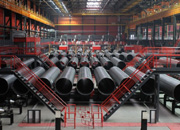 Threeway Steel is known as a professional supplier engaged in manufacturing and distributing a wide range of steel pipe, and our headquarter located the central part of China – Hunan and six associated factories throughout China.
Threeway Steel is known as a professional supplier engaged in manufacturing and distributing a wide range of steel pipe, and our headquarter located the central part of China – Hunan and six associated factories throughout China.
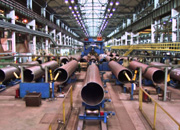 Threeway Steel is known as a professional supplier engaged in designing, manufacturing and distribution of a wide range of steel products with the headquarter located the central part of China – Hunan and six associated factories throughout China.
Threeway Steel is known as a professional supplier engaged in designing, manufacturing and distribution of a wide range of steel products with the headquarter located the central part of China – Hunan and six associated factories throughout China.
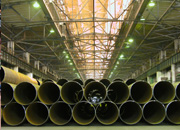 Threeway Steel is known as a professional supplier engaged in designing, manufacturing and distribution of a wide range of steel products with the headquarter located the central part of China – Hunan and six associated factories throughout China.
Threeway Steel is known as a professional supplier engaged in designing, manufacturing and distribution of a wide range of steel products with the headquarter located the central part of China – Hunan and six associated factories throughout China.
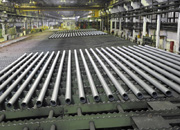 Threeway Steel is known as a professional supplier engaged in designing, manufacturing and distribution of a wide range of steel products with the headquarter located the central part of China – Hunan and six associated factories throughout China.
Threeway Steel is known as a professional supplier engaged in designing, manufacturing and distribution of a wide range of steel products with the headquarter located the central part of China – Hunan and six associated factories throughout China.
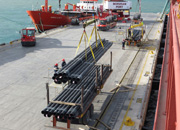 Threeway Steel is known as a professional supplier engaged in designing, manufacturing and distribution of a wide range of steel products with the headquarter located the central part of China – Hunan and six associated factories throughout China.
Threeway Steel is known as a professional supplier engaged in designing, manufacturing and distribution of a wide range of steel products with the headquarter located the central part of China – Hunan and six associated factories throughout China.

